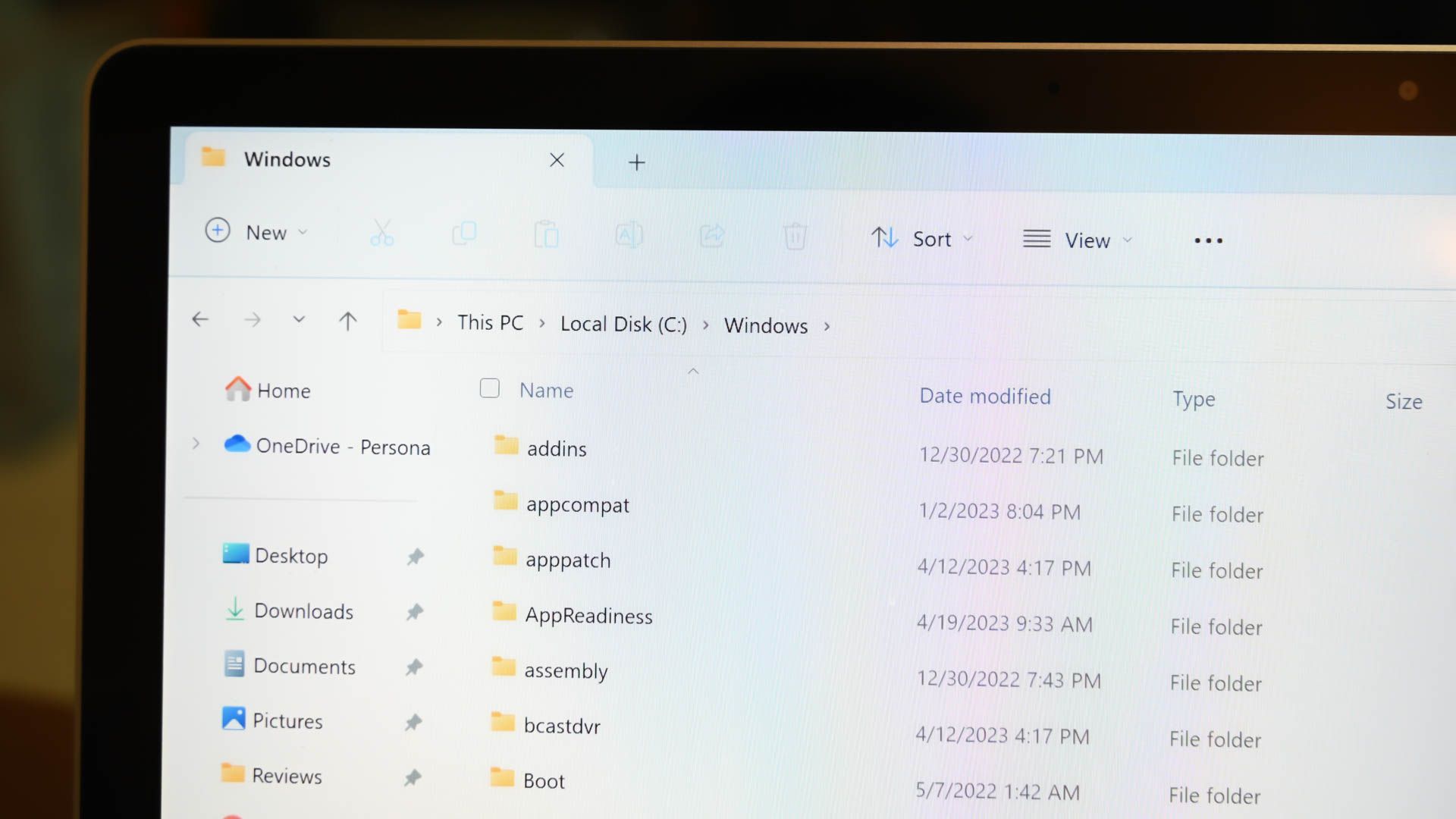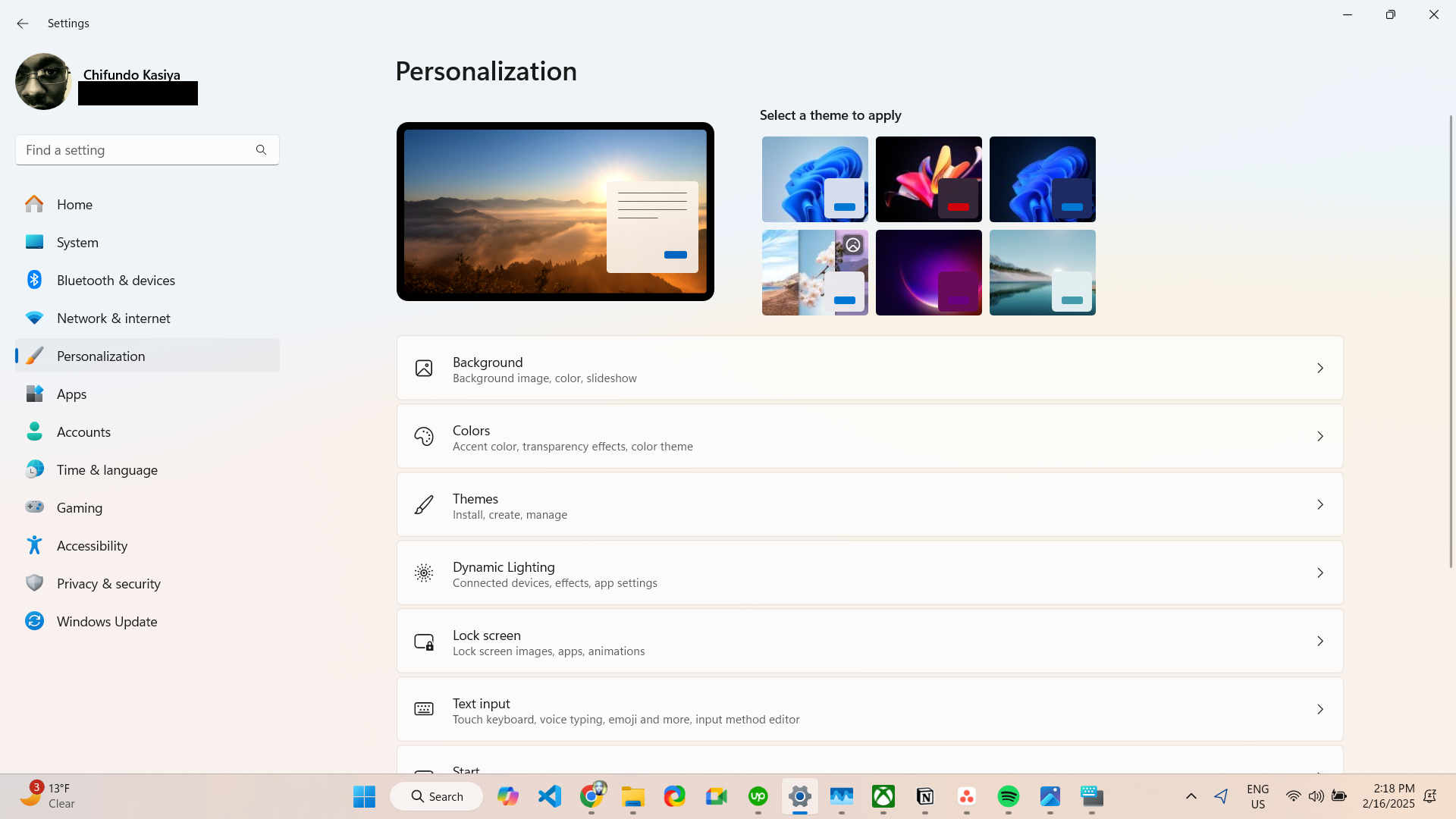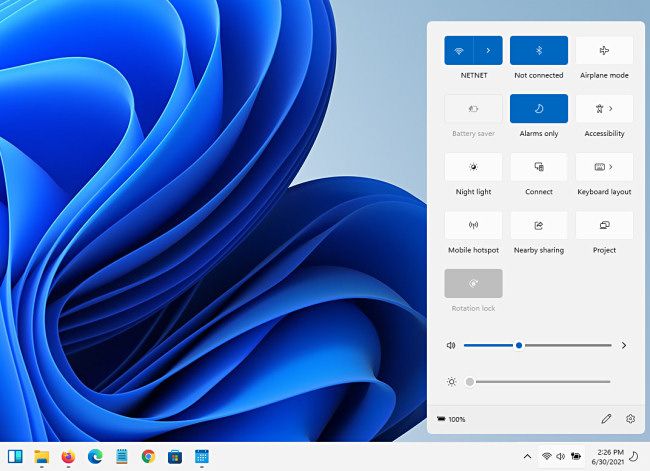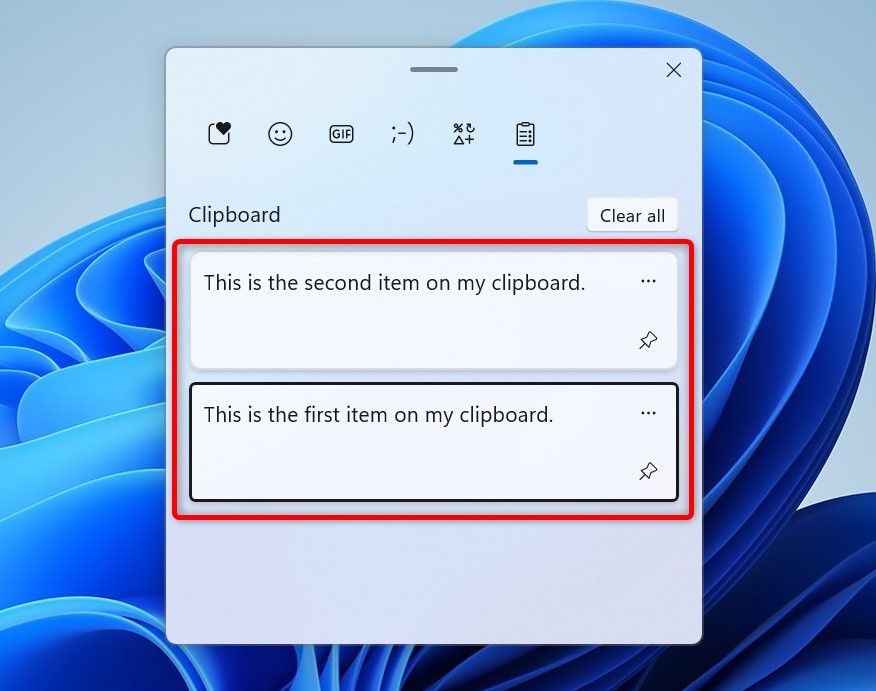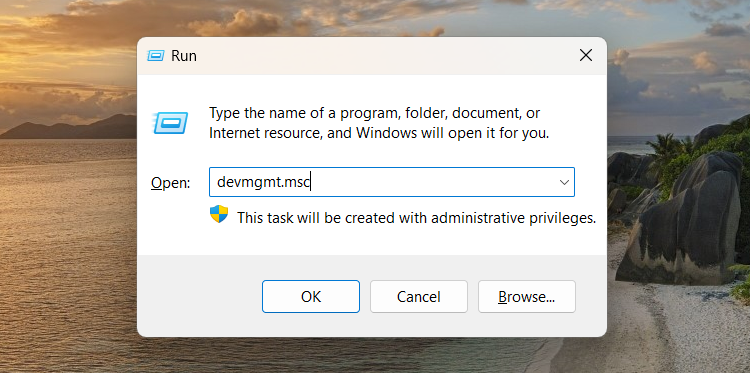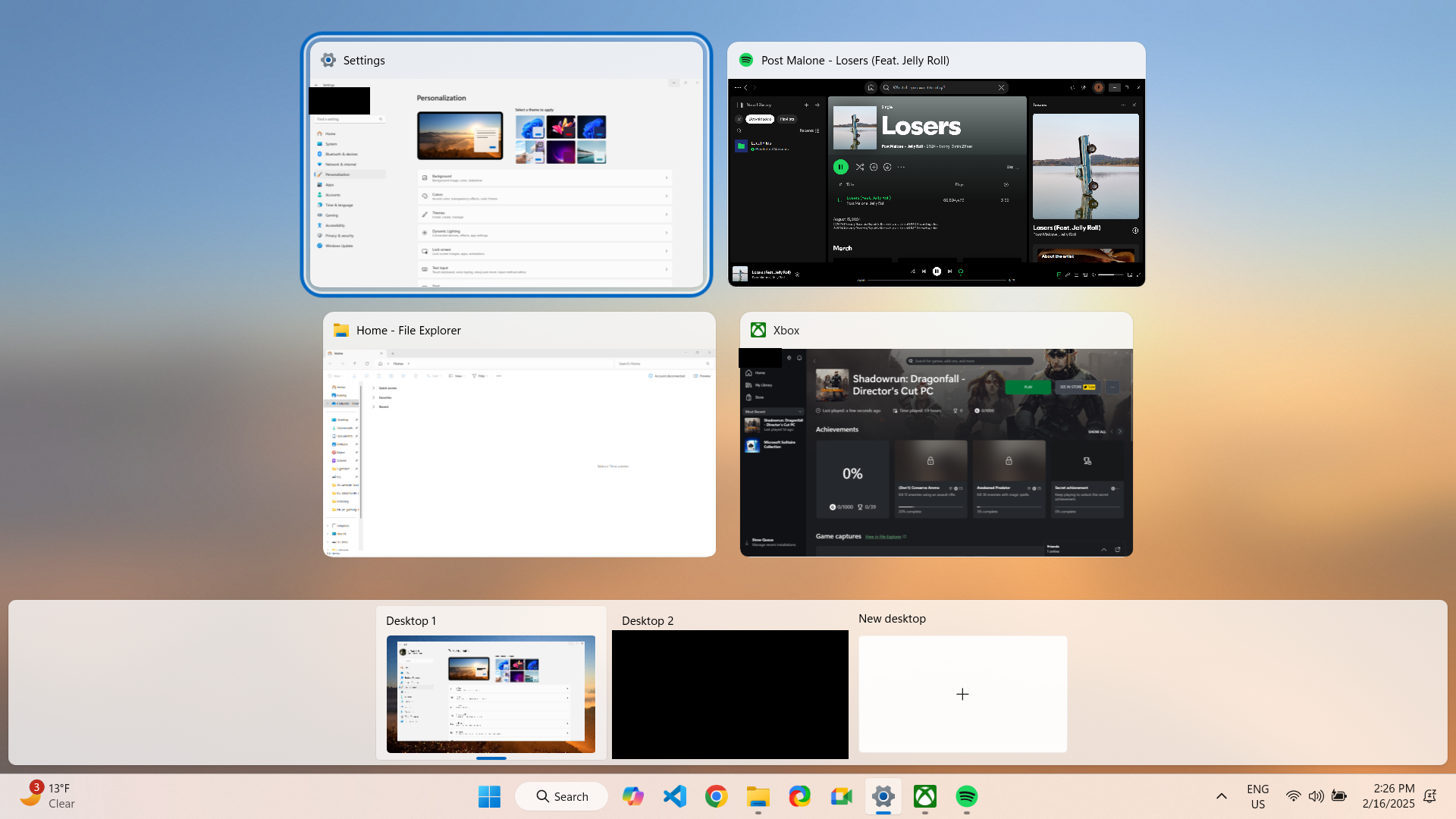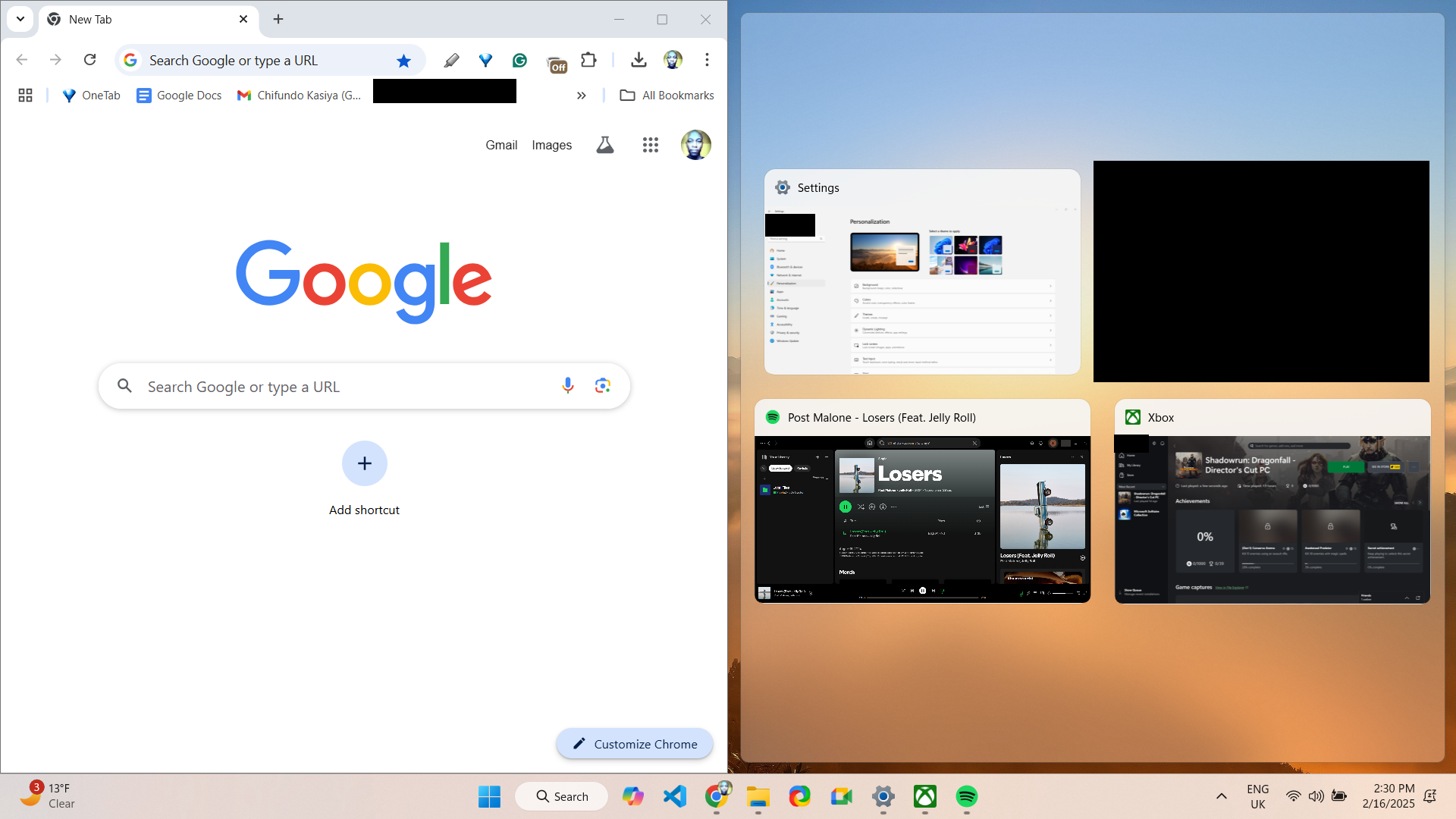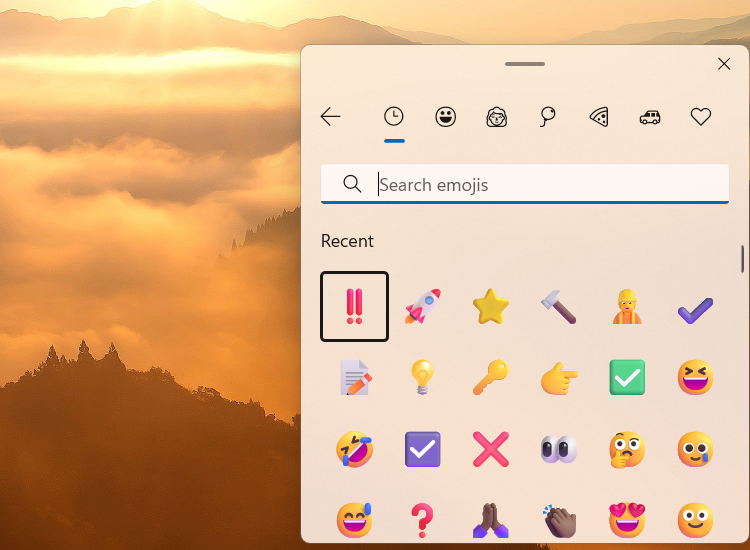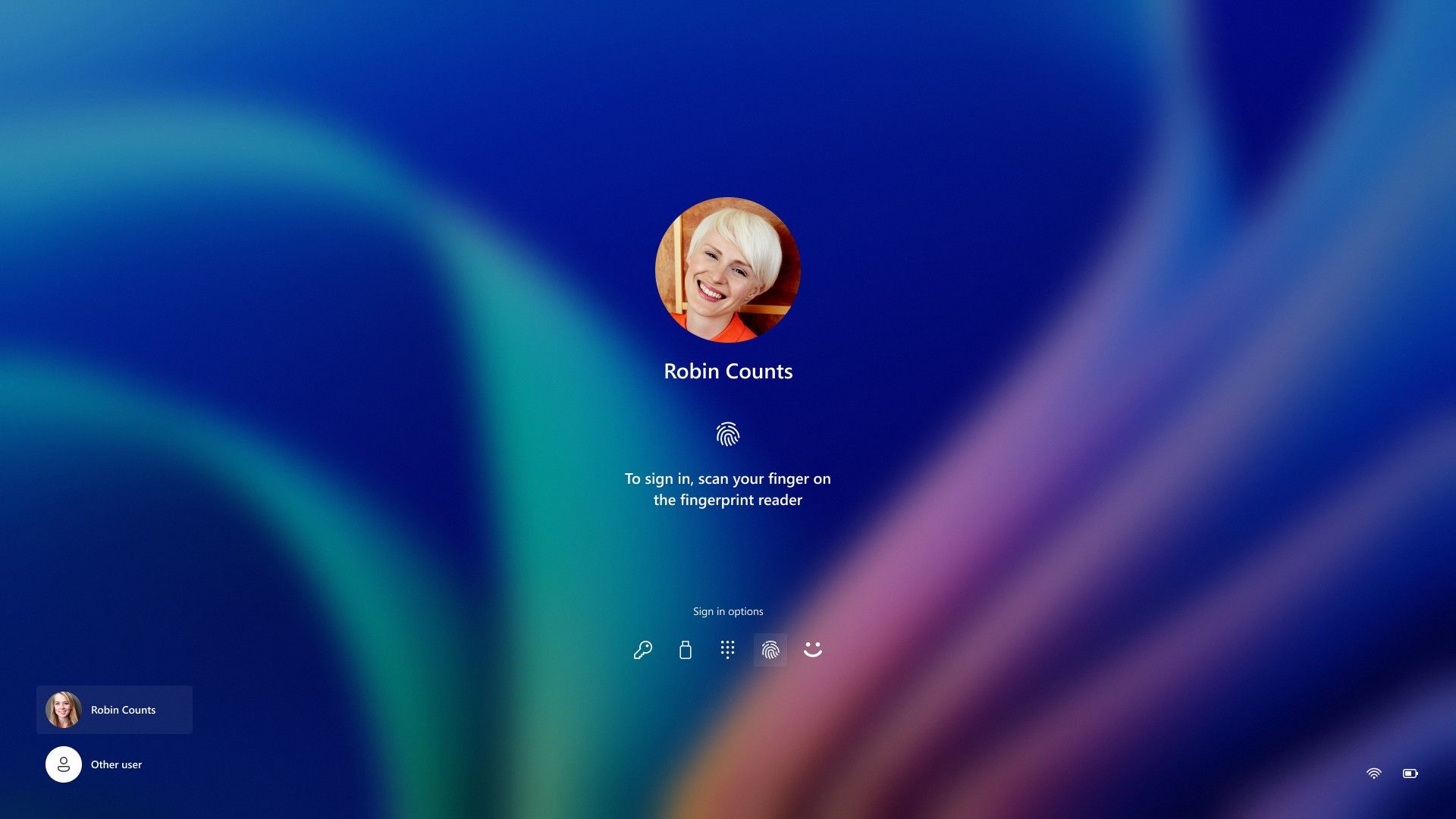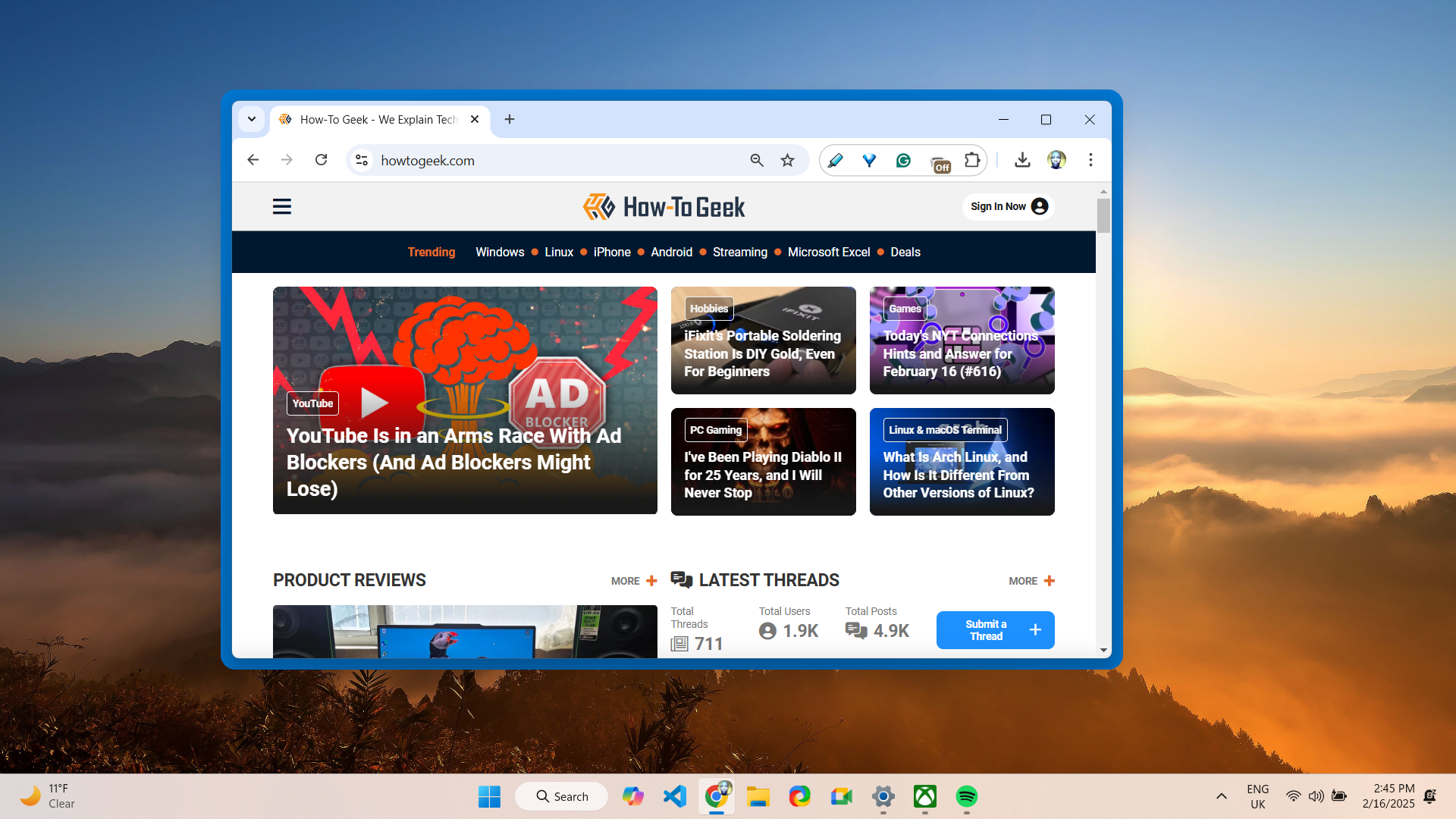Without the Windows key, I wouldn’t be as productive since it provides quick access to important shortcuts. Let me share the Windows key shortcuts I rely on daily, from launching apps to window management.
1
Win+E: Open File Explorer
When you press Win+E, you instantly open a new File Explorer window. It will launch in Home view, a page that provides quick access to your frequently used folders and recent files. If you don’t want this to be the default, you can change File Explorer’s default startup page to something like This PC or your personal OneDrive folder.
2
Win+i: Open Settings
The fastest way to open the Settings app is to use the Win+i shortcut. In Settings, you can tweak system configurations and preferences, as well as customize your Windows experience. This shortcut saves you time compared to navigating through multiple menus to reach the Settings app.
3
Win+A: Open Quick Settings (Action Center)
Sometimes, going into settings to do something simple, like switching Wi-Fi networks, disabling Bluetooth, or turning on airplane mode, is overkill. You can manage these in Quick Settings, a convenient flyout menu that contains common system controls. You can bring it out by pressing Win+A.
4
Win+X: Open Clipboard History
Ctrl+V only helps you paste a previously copied item, such as text, an image, or a document, into various programs. The clipboard history, on the other hand, is more extensive, allowing you to access items you previously copied (up to 25). Simply press Win+V to open the flyout menu and select the item you want to paste.
5
Win+R: Launch Windows Run
There is an easier way to access programs, folders, and system utilities—the Windows Run dialog box. You can open it by pressing Win+R and using common Windows Run commands like cmd, notepad, regedit, devmgmt.msc, or the full path of a folder. This allows you to access what you need without navigating through multiple menus.
6
Win+D: Show or Hide Desktop
Sometimes, the desktop can get buried by multiple windows, making it a chore to minimize everything to get to it. Pressing Win+D minimizes all open windows in one go, showing your desktop instantly. If you want to restore them, press it again to pick up where you left off.
7
Win+Tab: Open Task View
Win+Tab opens Task View, which comes in handy when you need to view and manage windows and virtual desktops. It shows thumbnails of running applications so you can easily switch between them. You can also use Task View to create and manage your virtual desktops if you like to use different workspaces for your tasks.
8
Win+Left/Right: Snap Windows to the Side
Pressing Win+Left or Win+Right will instantly snap the active window to the respective side of the screen. It helps when you’re working with multiple windows side by side. For instance, when comparing documents or multitasking between applications.
9
Win+Period (.): Insert Emojis
Text does not convey tone, and emojis can help you fix this. Press Win+Period (.) anywhere that requires text input to bring up the emoji panel and select the emojis you need. This works well in apps and programs without a built-in emoji picker (e.g., Microsoft Word, Google Chrome, and Notepad).
10
Win+L: Lock the PC
If you’re in a shared environment, such as an office or café, and want to step away from your computer, you can easily lock it by pressing Win+L. This will instantly bring up the lock screen without you first going through the Start Menu or pressing Ctrl+Alt+Delete.
Just ensure you’re using a strong password or the Windows Hello feature to secure your PC before leaving it momentarily unattended.
11
Win+Ctrl+T: Pin Window to the Top
Some programs have a built-in way to keep them always on top. But for those that don’t, you will need to enable Always on Top in PowerToys and press Win+Ctrl+T to pin it on top of everything else. The window will have a blue border around it to signify the feature is active.
12
Win+Shift+S: Take Quick Screenshot
If you want to take a partial screenshot, press Win+Shift+S to open the Snip & Sketch tool and drag your cursor over the area you want to capture. By default, this will save the screenshot in the Screenshots folder, where you can mark it up and share it.
There are more Windows key shortcuts you can use to speed up your workflow, but these should show you just how powerful this key is. To learn about more useful shortcuts, check out the Windows 11 shortcut alphabet guide.


